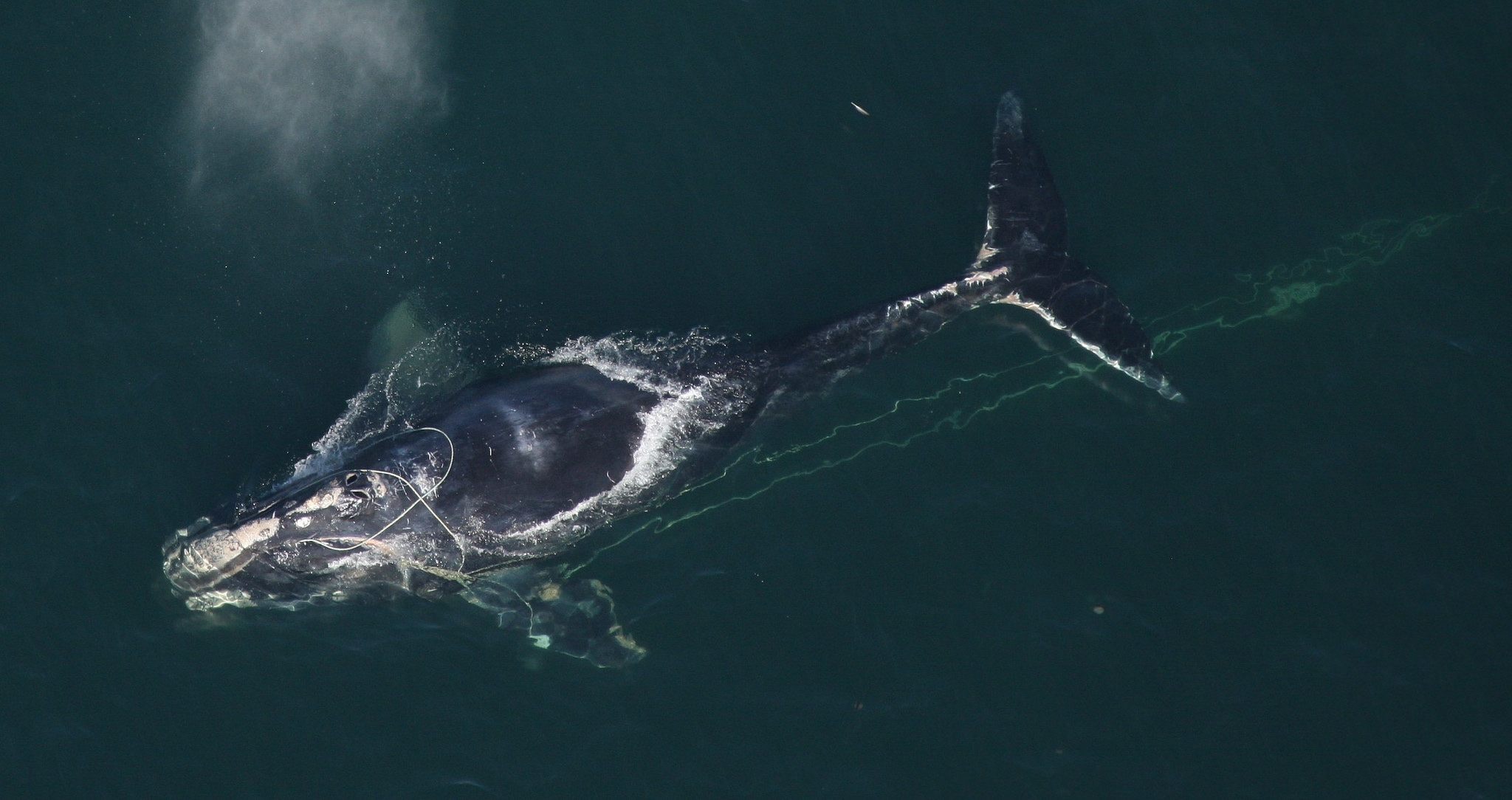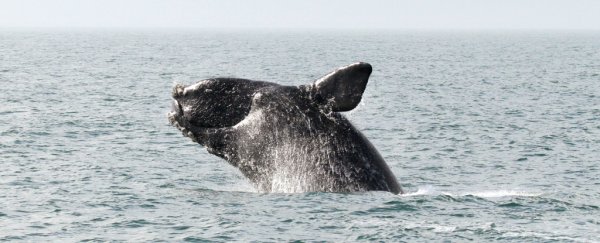US officials have warned that, unless we take immediate action, it's highly possible that rare North Atlantic right whales could become extinct.
2017 has been a deadly year for the already endangered species - according to estimates there were only 450 individuals remaining, and 17 of them died over the past 12 months.
Scientists aren't entirely sure what's causing the population to decline so rapidly, but two of the most frequently cited causes of death are being struck by boats, and getting tangled up in fishing nets and other gear.
To make matters worse, 2017 was also a poor reproductive year for the whales - there are only around 100 breeding females left and they're dying off faster than males, which means it's going to be challenging to rebuild population numbers.
Scientists don't use the term extinction lightly, but at a meeting of the regulatory New England Fishery Management Council last week, a spokesperson for the US National Oceanic and Atmospheric Administration (NOAA) said that's the reality we're now facing.
"You do have to use the extinction word, because that's where the trend lines say they are," said John Bullard, the Northeast regional administrator for NOAA Fisheries.
"That's something we can't let happen."
 Right whale tangled in fishing line. (NOAA)
Right whale tangled in fishing line. (NOAA)
North Atlantic right whales (Eubalaena glacialis) are a type of baleen whale that can weigh up to 71,700 kg (158,000 pounds).
Females spend a year pregnant with calves, and almost another year weaning them, which means it takes a long time to replace population loss.
According to the NOAA, the species has been in decline since 2010, with females hit harder than males.
Between December and March each year, the whales give birth in temperate waters off the coast of Georgia and northern Florida, before heading to New England and Canada to feed during the Northern Hemisphere spring and summer.
All of 2017's deaths were recorded off of New England and Canada.
So what's going on? Research published last month suggests that right whales move around a lot more than previously thought.
They also seem to have changed where they spend most of their time, perhaps being forced out of protected areas in search of food, which puts them them in harm's way.
"They seem to be visiting the Bay of Fundy less frequently than they used to, now appearing along the East Coast year-round where they were once only seen for a few weeks passing through, and more of them are gathering as a population in Cape Cod Bay in recent years," said Genevieve Davis, a NOAA scientist who worked on the study.
Another recent paper looked into right whale faeces and found evidence of "sky-high hormone levels" indicating severe stress in animals that had been tangled up in fishing gear.
Even though the whales survived the trauma, the study suggests that the resulting stress hormones could negatively impact their ability to reproduce.
Researchers are now looking into exactly how commercial fishing impacts the whales, and how best to reduce the damage in future.
"My colleagues are trying to find solutions so we can find out how they can continue to fish, but not entangle whales," said Elizabeth Burgess, a scientist with the Anderson Cabot Center for Ocean Life at the New England Aquarium in Boston, who worked on the faeces study.
The silver lining of this dire situation is that, although it's not entirely clear what it will take to protect the North Atlantic right whale, regulatory groups are already talking about the issue and are committed to making changes.
"The current status of the right whales is a critical situation, and using our available resources to recover right whales is of high importance and high urgency," said Mark Murray-Brown, an Endangered Species Act consultant with NOAA.
